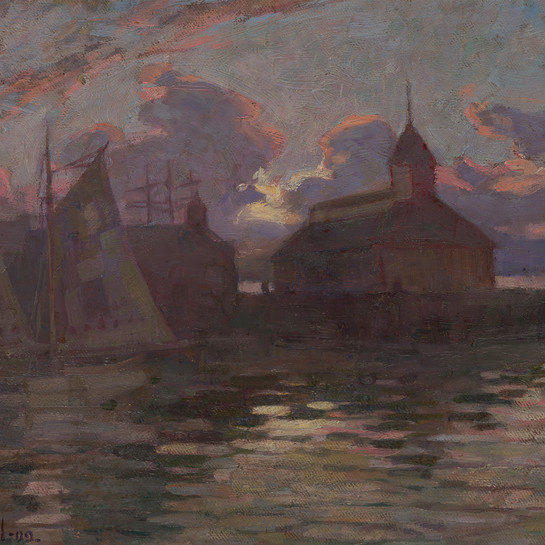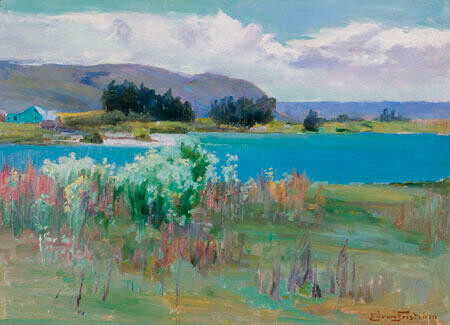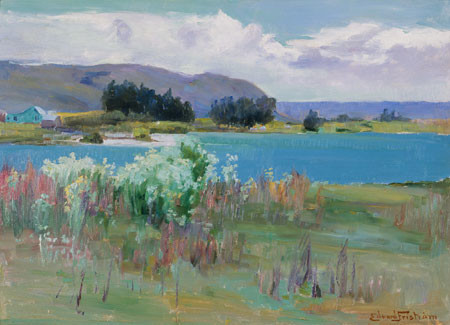Edward Friström
Sweden, b.1864, d.1950
Lake Wakatipu
- Oil on particle board
- Purchased, 1971
- 365 x 467mm
- 71/63
- View on google maps
Tags: blue (color), buildings (structures), clouds, flowers (plants), houses, lakes (bodies of water), landscapes (representations), natural landscapes, trees
Originally from Sweden, Edward Friström arrived in New Zealand via Australia in 1903. He is thought to have been self-taught and, like James Nairn, he favoured plein-air painting. There is a strong sense of immediacy in Friström’s painting, a vibrancy that lead one reviewer to comment on his work at the time as being that of a ‘fanatic’ who rejected ‘any detail whatsoever’. Friström’s work stands out in New Zealand painting of the early twentieth century for its refreshing sense of spontaneity and vigour. (March 2018)
Exhibition History
Lake Wakatipu is in Central Otago. These days it has the popular tourist resort of Queenstown on its shores but it was a less populated landscape in 1905 when Edvard Friström visited the area. His interest, however, was not in telling the story of early settlement, but rather in the relationship between the natural forms and colour. Here he has captured the vibrancy of the Central Otago landscape. Friström’s work has similarities to that of the Australian plein air (outdoors) artists.
Friström was born in Karlskrona, Sweden, and studied at the Royal Art School in Stockholm. He entered the Swedish navy as a cadet but deserted while in Australian waters, joining his artist brother, Oscar (1856 -1918) in Brisbane. In 1903 Edvard went to Auckland and, apart from a further 2 years in Australia, remained in New Zealand until 1915. He taught at the Elam School of Art but resigning over a pay-dispute, within five days sailed for the USA and settled in California. (Label date unknown)


